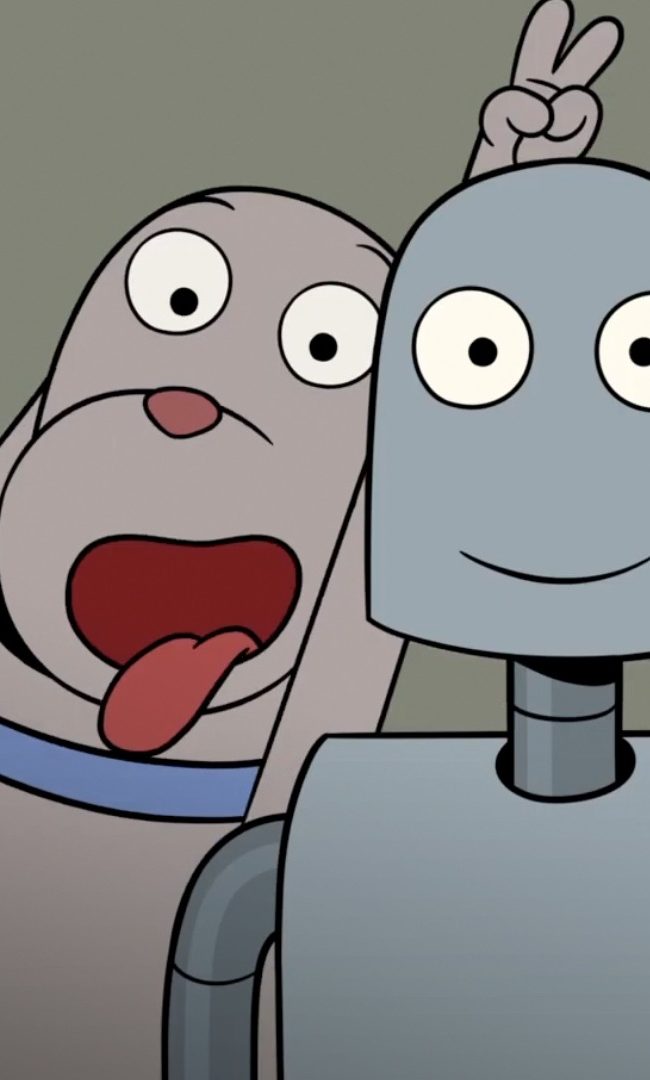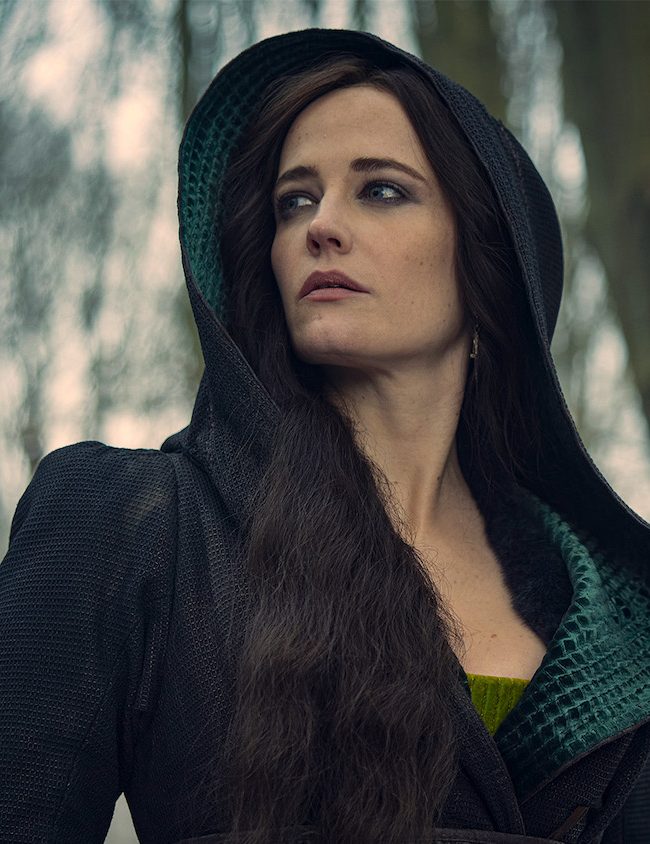A Conversation with Zoé Wittock (JUMBO)
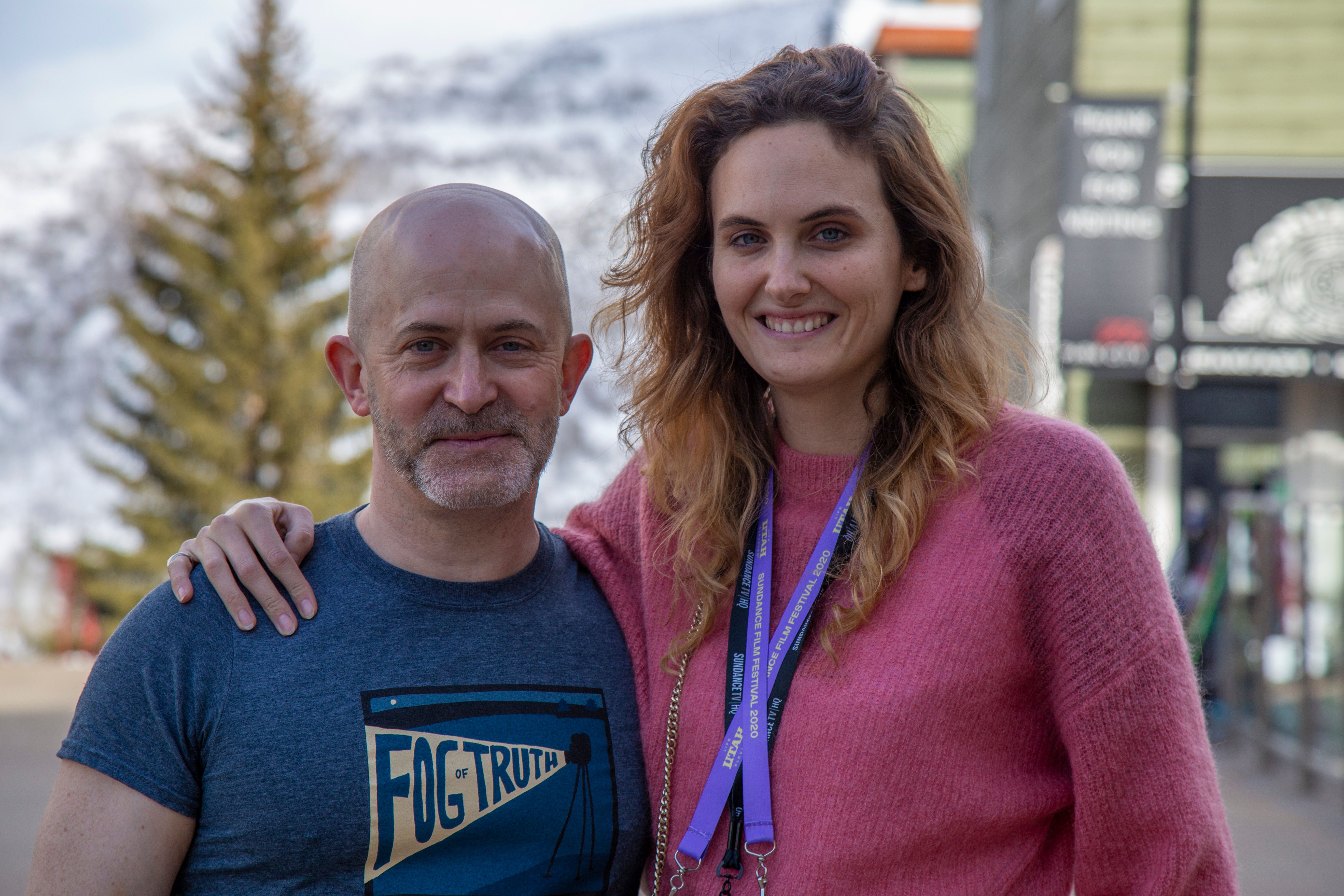
I met with Belgian director Zoé Wittock, making her feature debut, on Saturday, January 25, 2020, at the 2020 Sundance Film Festival, to discuss her delightfully strange Jumbo, a film about a troubled young woman who falls in love with a carnival ride. Jeanne (Noémie Merlant, Portrait of a Lady on Fire) lives with her mother, Margarette (Emmanuelle Bercot, My King), and the two could not be more different. While the latter is outgoing and overtly sexual, the former is shy and seemingly without much passion. Jeanne does, however, love her work as a cleaner at the local amusement park, and one of her hobbies is building small-scale models of the park’s mechanical attractions. When a new “Move It!” arrives, Jeanne dubs it “Jumbo.” Soon, the two begin communicating, Jeanne realizing that she has finally found her soul mate. Mom is horrified, but love knows no bounds, right? If the premise sounds odd, it is, but that’s the charm. Who needs the same old kind of romance? Here is a condensed digest of our conversation, edited for length and clarity. At times, I have adjusted Wittock’s otherwise impeccable English to make it fit American idioms.
Hammer to Nail: Your opening title card explains how this was “Inspired by a true story.” I heard a little bit of your answer last night at the Q&A, but for the sake of this interview could you please explain how the hell that is possible? (laughs)
Zoé Wittock: (laughs) It’s interesting that you say, “How the hell is that possible?,” because that was definitely my first reaction when I encountered the true story. I was actually just reading the newspaper and stumbled upon an article that mentioned this woman who fell in love with the Eiffel Tower and married it. So, my first reaction was kind of, “What the hell?” (laughs) Definitely amused. And then at the same time, I just couldn’t stop thinking, “How do you get there? How do you become a person that falls in love with the Eiffel Tower? Why?” You know, so I just started asking more and more questions, researching, and then contacted her, Erika Eiffel.
HtN: So, this is a relatively recent story, the woman who fell in love with the Eiffel Tower?
ZW: Yes and no. She fell in love with the Eiffel Tower probably at least a decade ago.
HtN: OK.
ZW: But I just hadn’t heard about it until a few years ago when I started writing the script. Then, when I contacted her, she was so down to earth that I was kind of faced with my own preconceived idea of what she might be. I guess I was expecting or hoping someone a little crazy or fun, and she was so rational that the contrast was fascinating. That’s where the idea of this film kind of started: one would think that if you marry the Eiffel Tower, you’re crazy, or if you fall in love with an amusement-park ride, you’re crazy, but the whole thing of the film is like trying to bring that crazy to our normal and just question that crazy. Is it really crazy or not? You know, what can you accept?
HtN: Right, and certainly that is the journey of the mother character, to learn to accept.
ZW: Yeah.
HtN: As the mother’s boyfriend Hubert says, “What’s wrong with that?”
ZW: Right.
HtN: So, beyond the fact that you’re basing it on this woman who married the Eiffel Tower, everything else comes from your own head?
ZW: Yeah, in some way.
HtN: (laughs) Have you ever fallen in love with an inanimate object?
ZW: (laughs) No, I haven’t, but I do like amusement-park rides! It was just that when I…from that story I was like, “OK, it’s a cool story and maybe a documentary,” but as a filmmaker of narrative-fiction film, I couldn’t really do anything with a static Eiffel Tower. So then I was like, “If I’m going to be interested in that subject, I need to put it in a different setting.” And so I started thinking, “What kind of settings could be interesting? What kind of objects?” And that’s when I kind of stumbled upon the idea of making it into an amusement-park ride because obviously it can move, it can make sound, it flashes lights, you know?
HtN: Right.
ZW: And for myself, even though I’m not in love with those rides, I still have a lot of emotions when I go on a ride. I’m either happy, ecstatic, or scared. Adrenaline rushes, you know? So, I could understand how someone would extend that feeling to love.
HtN: Sure, and architecturally, it does bear some passing resemblance to the Eiffel Tower, in terms of the structure.
ZW: Yeah.
HtN: So, you’re originally Belgian, but you currently work and live in France. Where did you shoot Jumbo?
ZW: Jumbo was initiated in France, but we co-produced with Belgium and Luxembourg, and we actually shot partly in Belgium and partly in Luxembourg, because they are obviously next to one another. We shot in the south of Belgium and north of Luxembourg, which is the Ardennes area. My grandfather is actually from that area, the Ardennes. So in terms of landscapes that I knew from Europe and Belgium, those were very vivid in my head. It just seemed logical to go there and shoot the film in that setting.
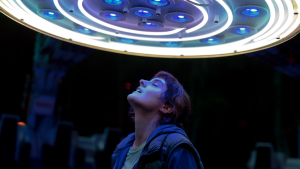
A Still from JUMBO
HtN: What’s nice about the location is that it looks distinctly European, but it’s not familiar. In other words, it’s not a location that’s been shot the hell out of, yet.
ZW: No, not yet. Exactly. Some Belgian filmmakers explore a lot of the Ardennes, but it’s not really widely known.
HtN: But it was good. I liked that.
ZW: Oh, cool.
HtN: Your film features, among other actors, Noémie Merlant and Emmanuelle Bercot, who play the daughter and mother. How did you cast? Also, does this film predate the work that Noémie Merlant did in Portrait of a Lady on Fire?
ZW: We actually made Jumbo before she was even cast in Portrait. It’s just that Portrait, I guess, had less VFX [visual effects] or post work and just went really fast in terms of the post-production and getting it ready for the Cannes premiere.
HtN: So, how did you find her? I mean, she’s quite something.
ZW: Yeah, she’s a very interesting actress. We actually went kind of … we looked for every young actress, of that age, for the role in France. I contacted all of my friends, casting agents, and then just agents, and just talked and talked to people. One of my friends, actually, knew Noémie from friends of friends and was like, “She’s very interesting.” She hadn’t done too much yet, but she had already been working a bit.
So, she came into the casting, and I thought she did a great audition. But the funny story is even though she gave a great performance, I did not call her back right away because she had come dressed in a way where she was very strong in her character, and I wanted someone a little more fragile. So I kept searching, and then months later I was like, “Ugh, I’ve seen great, amazing girls, but still not that one,” and then Noémie was still in the back of my mind. I was like, “There’s really something about that girl. I want to see her again,” and then she came back and she made me cry. I was like, “OK, well, she is obviously the one,” you know? And she was cool enough to come back.
HtN: And then how about Emmanuelle Bercot?
ZW: Emmanuelle Bercot was a very different process. I had seen her in Maïwenn’s film Polisse, which she co-wrote. I’d seen her in interviews, as well. I just loved her demeanor. Then she did Maïwenn’s last film, which is My King, with Vincent Cassel, that was in Cannes. She blew everybody away in that movie. So I was just very, very happy she said yes to the film when we sent her the script.
HtN: And the two of them work wonderfully together.
ZW: They do.
HtN: I’m curious, you were talking earlier about the VFX for the Move It! ride. How much of Move It!’s movements and other aspects were done in camera, and how much did you have to do with post-production VFX? In other words, there are things that look like, “Sure, a machine could do that,” and other things where I was going, “I wonder if that was all in post?”
ZW: To be honest, a lot of the work is done live. That was our big challenge, but we do obviously have great visual effects. We worked with a great VFX house in Belgium called Benuts, and what we wanted was to keep it as grounded as possible. For example, we didn’t try to add a voice to the machine. We added sounds that were something the machine could actually do. And the movements, we didn’t want to make extra movements that the machine could not actually do in reality. Same with lighting. We wanted to have lights that could actually exist. So we changed the electrical system to adapt it to our wishes for the film, changing like 3,000 bulbs on the machine. Yeah. Thank you, production designer! We had William Abello, a great one.
Then the VFX really just came in at the end to just push it a little bit further, like with the oil elements. Some of it was obviously live, but it was complemented by VFX. The light show at the end, the last time you see Jumbo really wake up, that was VFX as well, obviously. But see, it’s not that much. It’s just there to really heighten the film and heighten Jumbo, but almost all of it is live.
HtN: Good to know. Speaking of that scene where she basically has sex with a machine, it’s visually very evocative because you’ve got the white background and the dark oil. How did you come up with that, as well as with the drenching in oil and that metaphor for her having sex with Jumbo?
ZW: Well, earlier, there was a scene with her actually touching Jumbo, like in daylight. I really wanted to bring a more poetic scene to it. So I was looking and thinking, “How could you make love to a machine?” If I had actually shown her in the mechanics, it would have taken it in a different direction which was to go more gruesome and exploit the craziness of it, and I wanted to explore the beauty of it which is the beauty of a simple love story. So then I started thinking, “OK, so if she’s going down but not into a machine, she’s going down into her room. So what would that room be like?” Then I was like, “I don’t actually know what it’d be like, so let’s make it white.”
HtN: When you said, “exploit the craziness of it,” I had a sudden flash of what this would have looked like if David Cronenberg had made it.
ZW: Yeah, exactly. It would have been a totally different movie.
HtN: With all the machinery, yeah.
ZW: Exactly. He would have gone into the machinery, gone down there, and I think a lot of people would love that. I mean, I love Cronenberg and his filmmaking, but with this film, I just didn’t want to go in that direction.
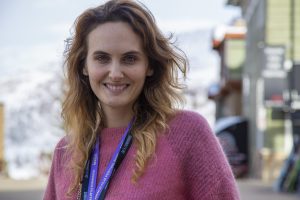
Filmmaker Zoé Wittock
HtN: One of the things I really like is that at no time in the film does Jumbo ever behave in a way other than what a machine would do when there are other people present. In other words, he’s only fantastical when Jeanne’s there, which then begs the question, “Is it all in her head, or is Jumbo really doing this?” I like that. Did you play around with this notion of perhaps other people seeing Jumbo have a consciousness?
ZW: Yeah, we definitely did in the script phase. We definitely played around with, “Do we want someone?” And there was actually one scene where you had the manager of the park, Marc, and Jeanne both in front of Jumbo when Jeanne was with Jumbo and was seeing some oil, and Marc was not seeing anything. But then we felt like it was kind of giving too much of the answer to people, and again, telling our audience that she was crazy. I think that the film is just trying to show that she’s just confused and looking for who she is, instead. But there’s that one, fun flash at the end for the mother, you know when Jumbo flashes two reds. Did you see that? At the very end? At the wedding scene when like they’re about to leave?
HtN: I was focused on the veil which blows away…
ZW: Yeah, the veil blows away…but then when they run away, the mother is like grabbing her bag, and then she sees something, and then suddenly Jumbo flashes two reds. So she’s like, “Oh, my daughter might not be crazy, or am I crazy now?” So I like that because it really brought the mother to…it’s just a matter of perspective, right?
HtN: Right, right.
Zoé Wittock: Right? So I wanted to just play on that to kind of give it an extra…a little “perhaps,” and maybe a direction where I would love the story to evolve were it to continue, you know?
HtN: For the sequel.
ZW: (laughs) For the sequel, exactly.
HtN: “Jumbo 2.”
Zoé Wittock: (laughs) “Jumbo 2.”
HtN: I have a question about your final image. The film is so much about the mother/daughter reconciliation and the need for the mother to accept her daughter. And then you end with that wonderful scene where they’re running, but you include Hubert in that image. And I’m curious why, because yes, he’s not unimportant, but the film has been so centrally about the mother/daughter. Why include Hubert in that final moment?
ZW: Well, because I think the fact that they find a new balance between the two of them allows for space for someone else.
HtN: OK.
ZW: And so I wanted that element in it to show that, “Sure, they’re reconciled, but it might actually even go bigger with Hubert entering the family and becoming more of a part of this family.”
HtN: I like that actor who played Hubert. Where was his accent supposed to be from? She says, “You have an accent not from here,” and it’s true. His French is accented.
ZW: Yeah, definitely. He’s from Flanders. He’s originally a Flemish speaker.
HtN: That makes sense. Great! Well, congratulations on the film.
ZW: Thank you very much.
HtN: I enjoyed it and wish you all good things with it.
ZW: I’m glad you enjoyed it!
– Christopher Llewellyn Reed (@ChrisReedFilm)








